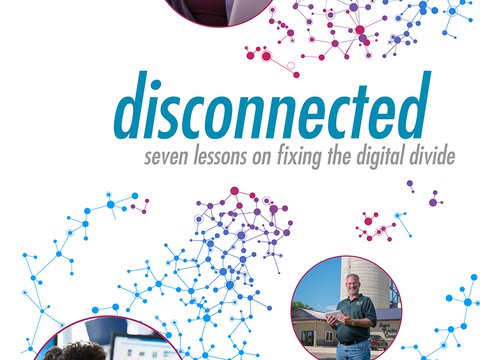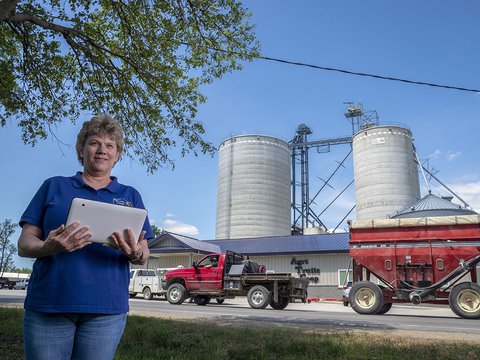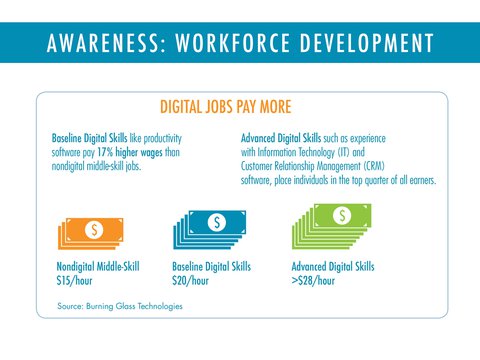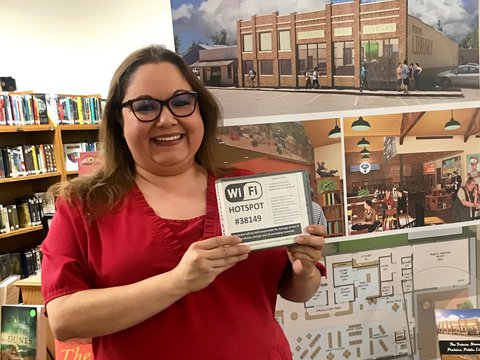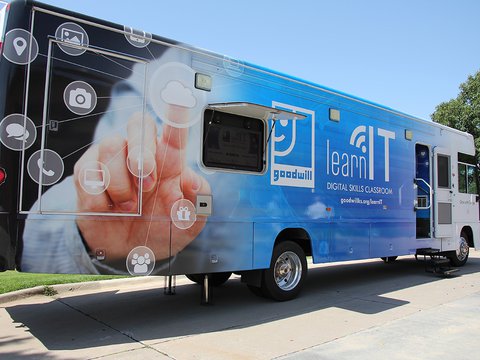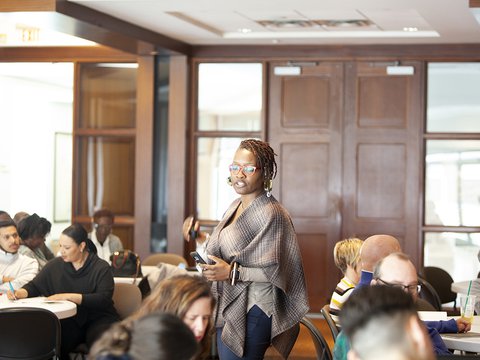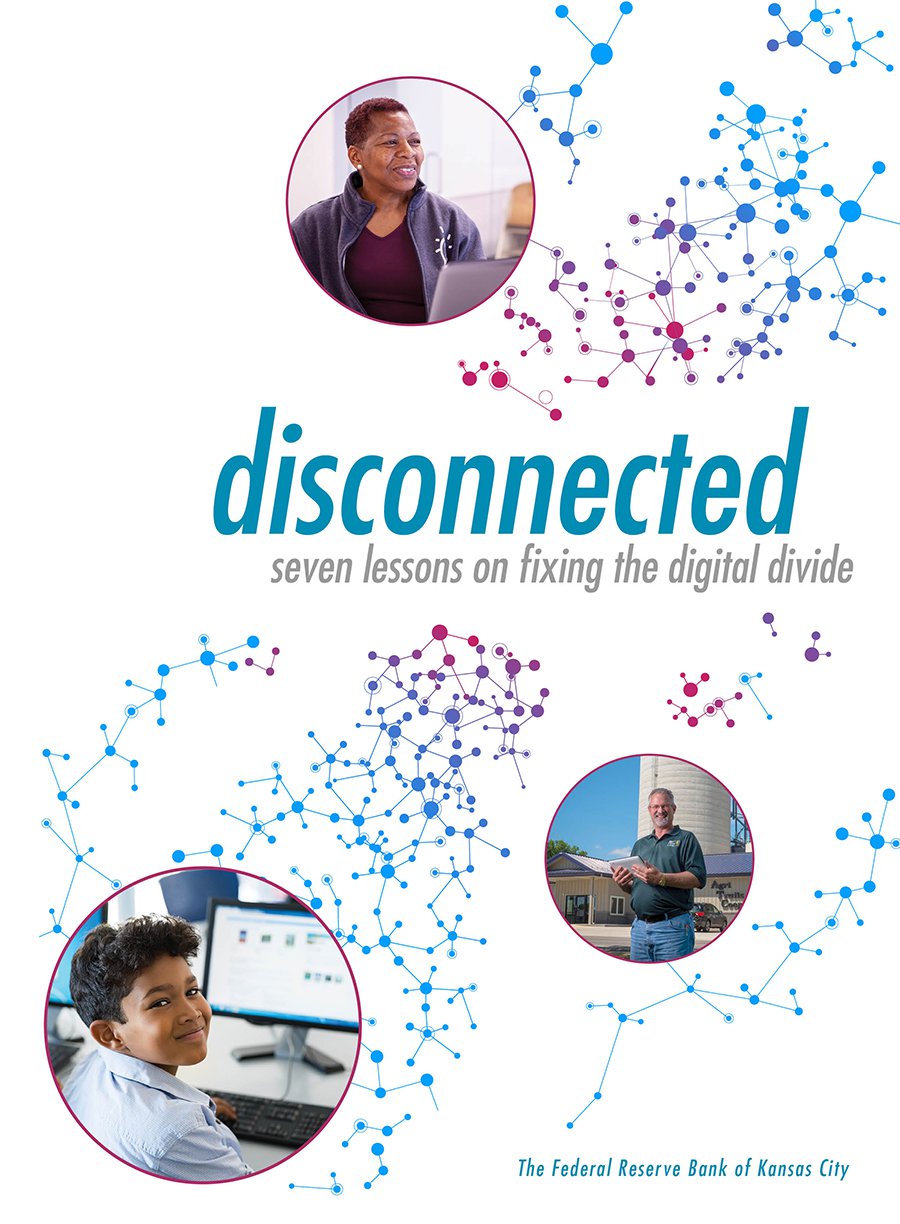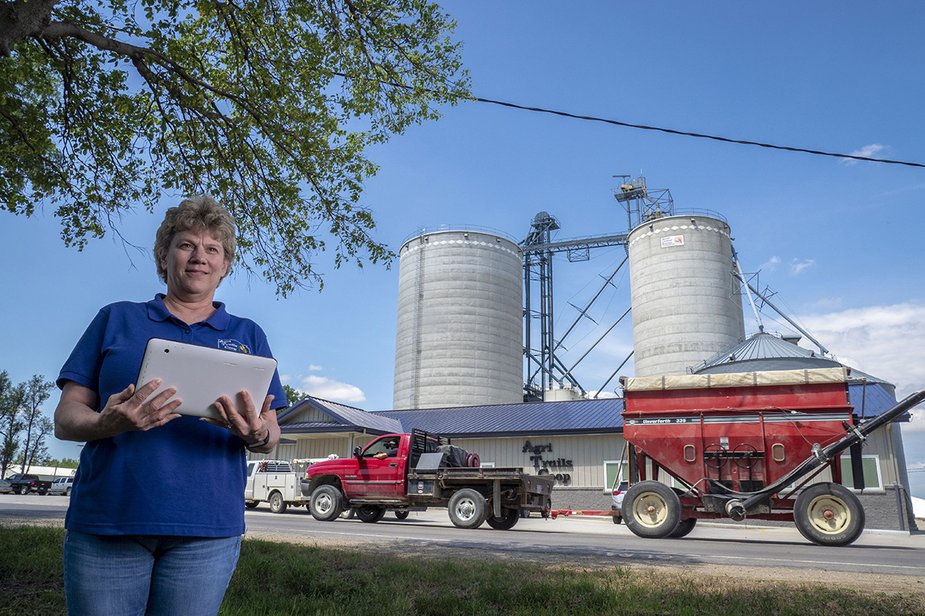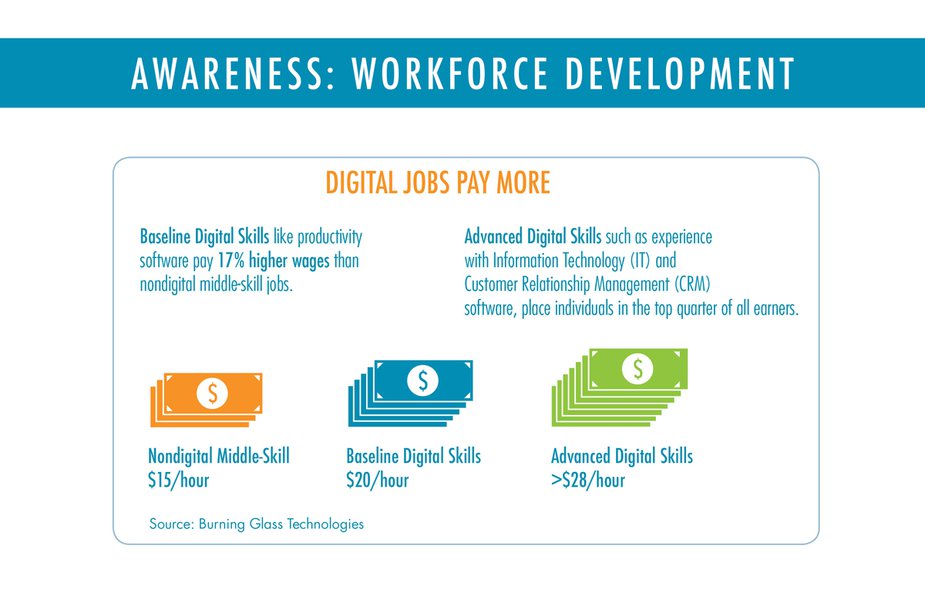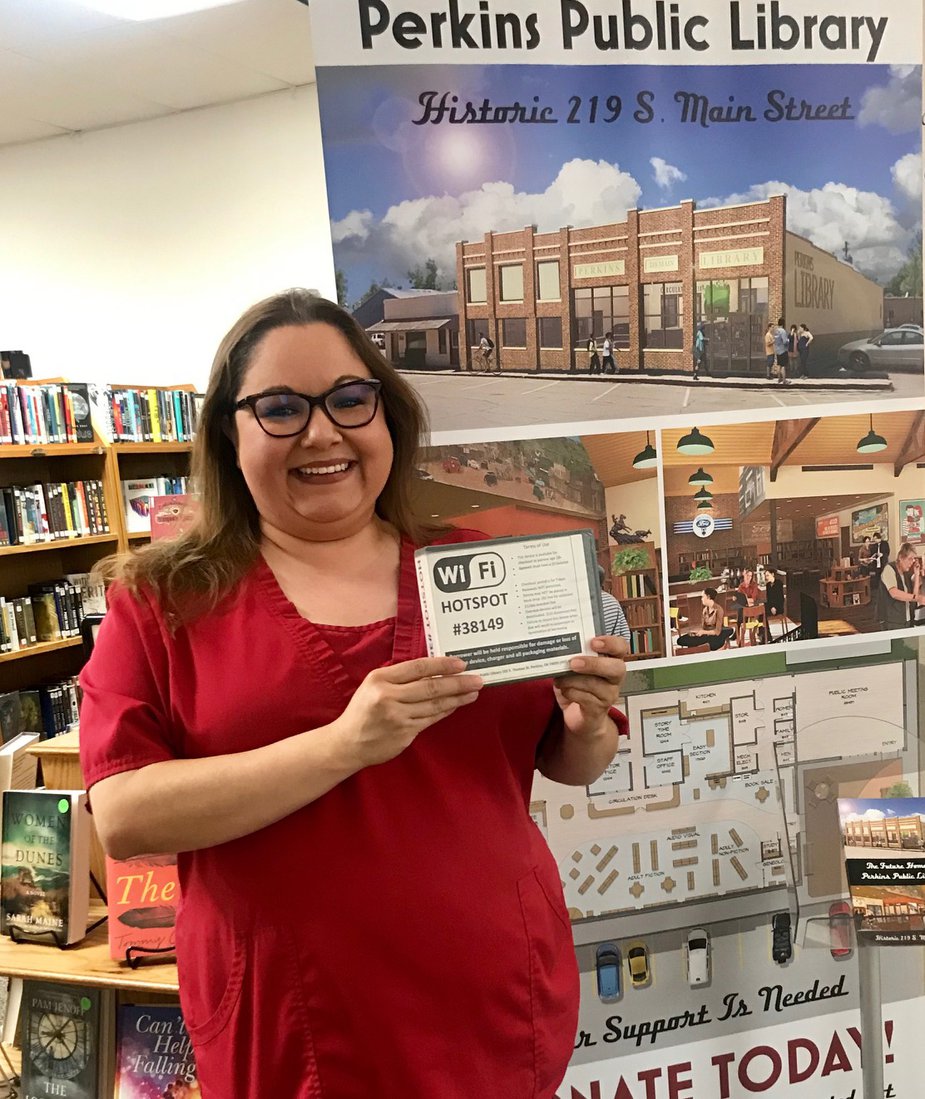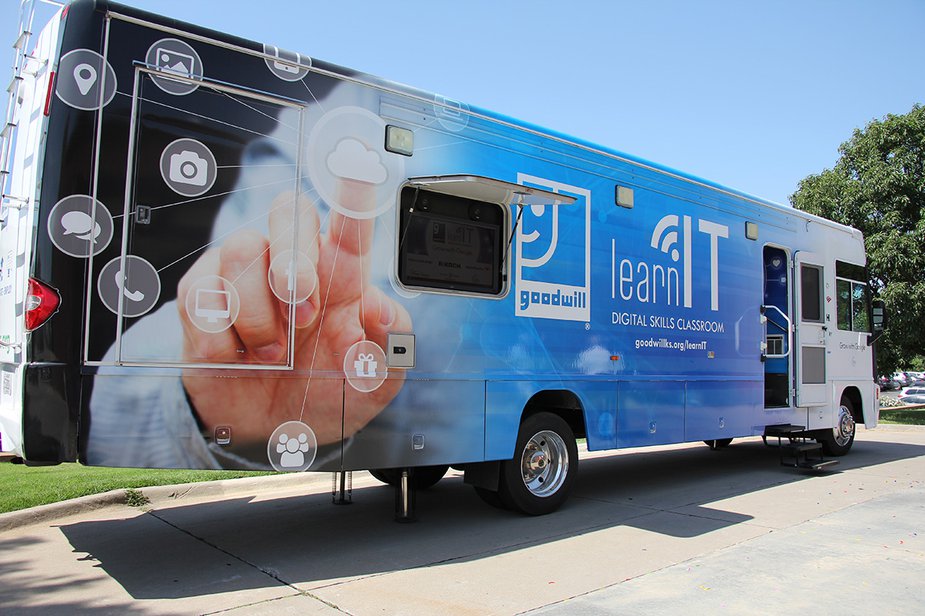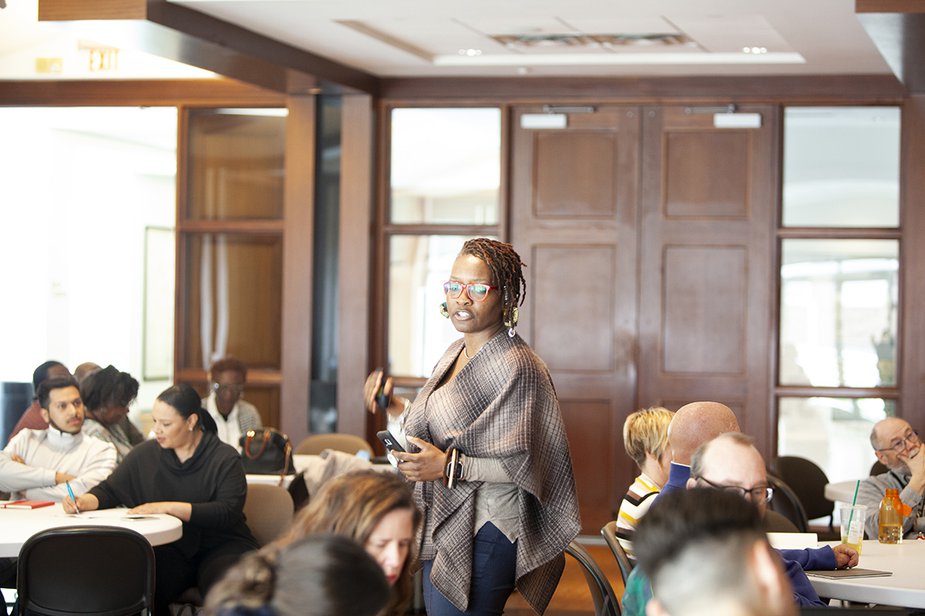Disconnected: Seven Lessons on Fixing the Digital Divide is a new report from the Federal Reserve Bank of Kansas City that focuses on broadband access, economic impact and solutions for communities to narrow the digital divide. The digital divide refers to the gap between those with and without access to affordable, reliable broadband and the skills and equipment to utilize it.
Today, many parts of the U.S. are left without broadband. Just 53 percent of adults with incomes less than $30,000 have broadband at home. Nearly 68 percent of people without broadband at home live in rural communities.
Based on national data, interviews, surveys and roundtables, Disconnected illustrates that the digital divide affects every aspect of community and economic development and that digital access should capture the attention of every community leader.
Click here to download a PDF of the report. To receive a complimentary hard copy of the report, please send your name, address and organizational information to Nicole.Cole@kc.frb.org.
Introduction
Communities across the country are in an economic race. To compete, they need employers and qualified workers, both of which require a robust information- and knowledge-sharing infrastructure. While some communities are ahead of the pack, others are falling far behind.
Broadband is a critical component in this economic race, allowing businesses large and small to reach customers, farmers to deploy resource-saving technologies, and workers to learn critical job skills.
“We want to attract employers and retain our young people, but employers need broadband and our students want Netflix.”
- Roundtable participant
For many Americans, broadband is simply too expensive. For others, particularly those in rural and tribal communities, broadband isn’t available at any cost. A 2016 Federal Communications Commission (FCC) External LinkBroadband Progress Report shows 34 million Americans lack access to fixed broadband.
This population is disproportionately low-income and rural:
- Just 53 percent of adults with incomes less than $30,000 have broadband at home, compared with 95 percent of those with incomes above $75,000.
- Nearly 68 percent of those without broadband at home live in rural communities.
Disparities also exist within metropolitan areas. Take Kansas City, for example. According to the U.S. Census Bureau, in 2015 nearly 88 percent of residents in suburban Overland Park, Kansas, had fixed broadband at home, while in urban areas, just 63 percent of Kansas City, Kansas, and 67 percent of Kansas City, Missouri, residents were connected.
Affordable home broadband is just one necessary element to narrow the digital divide. For individuals to be fully included in the digital world, they also need the relevant technical skills and devices necessary for access. That is why efforts to narrow the digital divide–known as digital inclusion–are referred to as a three-legged stool:
- Affordable broadband access: Access to sufficient bandwidth to conduct data-intensive tasks such as online learning and job research. The FCC defines this as minimum download speeds of 25 megabits per second (Mbps) and minimum upload speeds of 3 Mbps.
- Computer access: Specifically, access to desktops and laptops. Mobile devices do not provide equal ease of use or functionality for conducting critical tasks, such as applying for jobs or doing homework. Data plan caps on mobile devices also limit the amount of duties that can be performed online.
- Digital skills: At the most basic level, individuals need computer skills to apply for jobs, access financial services, conduct homework and safely browse the internet. More advanced digital skills, such as those needed for spreadsheets, word processing, email or even computer coding, can help a person earn a living wage.
Why we wrote this report
A robust, stable economy requires that all members have equitable access to opportunity. The Community Development team at the Federal Reserve Bank of Kansas City, along with our peers across the Federal Reserve System, work to raise awareness of issues and advance solutions for low- to moderate-income (LMI) and underserved communities.
The Kansas City Fed relies on a Community Development Advisory Council (CDAC) and countless community partners to stay informed of emerging economic and community development issues across its seven-state region: Colorado, Kansas, western Missouri, Nebraska, northern New Mexico, Oklahoma and Wyoming. CDAC members and community partners recently expressed growing concern over the digital divide’s impact on (primarily) LMI communities.
The Kansas City Fed launched a project in early 2018 to outline issues of the digital divide and identify innovative approaches that communities were taking to narrow it. Through a combination of roundtables with community leaders, one-on-one interviews and an online survey, we solicited and received feedback from more than 160 community leaders. These leaders shared perspectives on what’s working and what isn’t, which programs they admire, and what they wished the broader community would understand about the digital divide.
This report provides a summary of what we learned and opportunities for narrowing the divide. It is not intended to be a technical report. It is instead written for non-experts, to provide them with a holistic understanding of the digital divide and its relevance to a variety of community and economic development fields.
This report also is not exhaustive. Through this study we’ve come across great work that people are doing across the country to narrow the divide. Much of this work is being done in isolation from others who could learn from it.
Findings are organized by seven key themes that emerged throughout the study. Each theme combines relevant research and statistics, and examples of how the issue plays out in our communities. This approach is intended to provide both data and context on the issues.
The themes include:
- Awareness: Many lack an understanding of the digital divide.
- Change: The digital divide will never go away. Ever-changing technology means the digital divide is a moving target.
- Rural broadband: New business models and/or public funding are critical to serving
unprofitable areas. - Broadband adoption: Work with, not for, the community.
- Digital skills: Teaching digital skills is complex, labor-intensive and requires an element of trust.
- Equipment: Time and adequate equipment are needed to increase adoption.
- Evaluation and collaboration: Stakeholders are hungry to learn from others.
About the authors
Jeremy W. Hegle is a senior community development advisor for the Federal Reserve Bank of Kansas City, and leads efforts to narrow the digital divide across the Bank’s seven-state region. Jeremy also serves as the lead advisor for Western Missouri and Kansas, promoting fair and impartial access to financial services in low-to moderate-income communities.
Hegle is available for speaking engagements and presentations.
Jennifer Wilding, who joined the Federal Reserve Bank of Kansas City in August 2018 as a community development specialist, supports the community development team in addressing important economic issues and creating opportunity and resilience for lower-income communities.
The views expressed by the authors are their own and do not necessarily reflect those of the Federal Reserve System, its governors, officers or representatives.
Additional resources
This study benefitted from an array of articles in mainstream media and academic journals. This recommended reading list focuses on guidebooks or websites that can help groups take action to close the digital divide.
Ever-changing technology
- External LinkClosing the Digital Divide: A Framework for Meeting CRA Obligations, Federal Reserve Bank of Dallas, 2016. The report provides financial institutions with an understanding of how broadband meets the “primary purpose” definition of the Community Reinvestment Act, a road map of best practices for closing the digital divide, and a list of tips for preparing their case for digital opportunity investments, among other elements.
- External LinkGuide to CRA Grantmaking for Digital Equity and Economic Inclusion, National Collaborative for Digital Equity (NCDE), August 2018. This brief guide to using the Community Reinvestment Act for digital inclusion contains examples of digital investments and tips on how to create effective CRA proposals aimed at narrowing the divide. NCDE updates the guide regularly.
Rural Broadband
- External LinkBecoming Broadband Ready: A Toolkit for Communities, Next Century Cities, January 2019. Next Century Cities is a nonprofit membership organization founded to support communities and elected officials in providing broadband. It offers a toolkit that covers topics such as: building a community movement; establishing policies and procedures such as “dig once” and “simplified permitting;” creating a digital inclusion plan; identifying legislative and regulatory barriers; exploring connectivity options such as co-ops or open access networks; exploring financing options; and more. The toolkit includes real-life examples and a helpful glossary and checklist.
- External LinkBroadband Now: What ISPs serve your ZIP code? BroadbandNow has identified 2670 internet service providers in the U.S., their coverage and download speeds. External LinkEnter your ZIP code and the website tells you which DSL, copper, cable, fiber-optic, fixed wireless and mobile broadband providers serve where you live. Scroll down for an “internet provider competition map” for your region, showing how many providers serve which census tracts.
- External LinkCommunity Network Map – Institute for Local Self-Reliance. The interactive map includes more than 800 communities. It tracks a variety of ways in which local governments have invested in wired telecommunications networks as well as states with laws that discourage such approaches. The map can be configured for a lot of detail, or to focus on just one element, such as dark fiber, gigabit speeds, citywide fiber, etc.
- External LinkBroadband Scorecard Report – R Street. Companies that want to deploy broadband must deal with regulatory barriers imposed by government. Much of the regulation comes from the Federal Communications Commission, but state and local governments also play a role. This 2019 study evaluates all 50 states and assigns each a score based on how conducive their laws are to broadband deployment.
Adoption
- External LinkDiscount Internet Guidebook – NDIA and Public Knowledge. The guidebook is a practical guide for digital inclusion practitioners, such as libraries and government agencies. It describes affordable broadband plans for low-income households offered by commercial internet providers, with information about who is eligible, how to apply and more. Click External Linkhere to access the searchable list of discount offers.
Affordable equipment
- External LinkCertified Electronics Recyclers – U.S. Environmental Protection Agency. There are two certification standards for electronics recyclers—the eStewards® Standard for Responsible Recycling and Reuse of Electronic Equipment© and the R2-Certified Recycling Standard for Electronics Recyclers. This site offers information about both programs, and an interactive map of where recyclers are located and what services they offer. Find the nearest Microsoft Registered Refurbishers External Linkhere.
Evaluation and Collaboration
- External LinkDigital Inclusion: Outcomes Based Evaluation - Benton Foundation. Outcomes-based evaluation provides a way for programs that promote digital inclusion to understand the impact of the services provided. This report describes the challenges facing community-based groups and others in using outcomes-based evaluation to measure the success of their digital inclusion programs and offers recommendations to address those shared barriers.
- External LinkThe Digital Inclusion Coalition Guidebook - NDIA. NDIA developed The Digital Inclusion Coalition Guidebook to capture and share lessons learned from six existing coalitions. The guidebook offers advice for starting and building a coalition and on the types of things that digital inclusion coalitions typically do.

